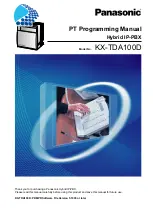
Fig.5.x
Ref.
Description
T
temperature
F1
Fan activation threshold
Frd
Differential
Ref.
Description
F5
Fan cut-off temperature
F6
Maximum speed
F7
Minimum speed
5.5
Anti-sweat
heater or fan
modulation
The control of anti- sweat heaters is performed by comparing the dew point calculated based on the
ambient temperature and humidity, and the temperature of the showcase glass, measured by a probe or
estimated using the showcase outlet, intake and ambient temperature. MPXone features two types of
anti-sweat heater control:
l
PI (proportional, integral);
l
fixed activation (manual control).
The conditions for the activation of the algorithms are as follows:
Algorithm
Activation condition
PI
rHd > 0
fixed activation (manual control)
rHd = 0; rHt > 0
If the temperature read by the glass temperature probe is only estimated, PI control becomes
proportional only. If both algorithms are activated, the PI algorithm has priority over fixed activation,
which does not require the ambient temperature and humidity probes. There are a series of conditions
whereby the PI algorithm stops operating and, if enabled, fixed activation control takes over.
Condition
Cause
Glass temperature
probe not valid
l
physical probe not configured or faulty;
l
the estimated glass temperature probe value cannot be used as the outlet probe or intake
probe is not configured or is faulty or the ambient probe is broken or absent (*)
Dew point not
valid
l
humidity probe and ambient temperature probe are both not configured or not working;
l
the serial dew point value is not available
Tab.5.a
(*) If the intake probe is not configured or is faulty, only the outlet probe is used.
PI control
Inputs
The humidity (SU) and ambient temperature (SA) probes may be (see parameters /FL, /FI):
l
connected to the Master, which automatically shares them with the Slaves;
l
connected locally to each controller;
l
sent from the supervisor via the serial probes.
Alternatively, the supervisor can directly supply the dew point value (Sdp) using the serial probes (see
parameter /Fn). The glass temperature probe (Svt) can be connected directly to each controller (see
parameter /FM), or the value can be estimated. The estimate of the glass temperature probe reading is
performed internally when: ambient temperature (SA), outlet temperature (Sm) and intake temperature
(Sr) are available, and depends on parameters rHA, rHb and rHS. Parameters rHo, rHd and rHL determine
the modulating output.
ENG
0300086EN rel. 1.0 – 04.09.2018
5. Functions |
71
















































